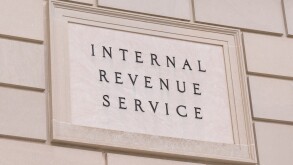Revisions to the definition of a PE in BEPS Action Plan 7, the introduction of unique business models, and inconsistency in domestic tax laws relating to model tax treaties are catalysts for revisiting the domestic tax laws relating to attribution of profits to a PE in India.
The reports interpretation
The report summarises the committee's interpretation of Article 7 under the UN's Model Tax Convention (MTC) and the OECD's MTC in pre- and post-2010 amendment form.
According to the committee, the approach on attribution of profits to a PE could be segregated into:
Supply approach (allocates profits where supply chain and activities are located);
Demand approach (allocates profits where sales takes place); and
Mixed approach (allocates profits considering both supply and demand).
The report also deliberates on the economic basis for allocation of taxing rights, the practice followed in some jurisdictions, the views of certain experts and academics, and the Indian courts' positions on attribution of profits to a PE.
It is important to note that the committee holds that provisions of Article 7 of the revised OECD MTC (post 2010) which advocates attribution of profits following the arm's-length principle (ALP) is absent in the OECD MTC (pre 2010), UN MTC and the India treaties.
The committee finally holds that Article 7 of the UN MTC, OECD MTC (pre-2010), and Indian model tax treaties prescribed a "mixed approach" towards attribution of profits to a PE which can be achieved through the formulary method, with proper safeguards through weights relating to several factors such as assets and wages. These are coined by the committee as "fractional apportionment" under the overall canopy of the formulary method.
The committee also recommends attributing 2% of revenues derived from India to the PE in cases where the enterprise is incurring a loss.
Arm's-length principle
The attribution of profits to a PE, taking it into account a distinct and separate enterprises engaged in the same or similar activities of which it was a PE (OECD pre-2010), is nothing but the application of the ALP.
UN MTC on Article 7 resembles the OECD's pre-2010 approach (ALP) with two additional stipulations, i.e. (1) the 'force of attraction' rule, and (2) 'limitation on expense deductions' for a PE. Indian tax treaties follow the UN MTC and also resemble the pre-2010 OECD MTC.
Simply concluding that the application of the ALP for allocating profit is a "supply approach (OECD post-2010)" fails to appreciate that an ALP analysis also mandates the adoption of the profit split method (PSM) under special circumstances, namely where both PE and head office (HO) contribute to unique/non-routine intangibles, resulting in the appropriate attribution of profits to the market place.
In fact, unlike the past, greater focus on value creation analysis and application of the development, enhancement, maintenance, protection and exploitation (DEMPE) functions under the ALP will also lead to appropriate attribution of profits to the PE if the PE is involved in any activities pertaining to key value drivers or intangibles in the business.
The ALP approach will help to achieve the objective of the mixed approach, without resorting to application of the formulary approach, which fails to recognise key factors like industry nuances, business models, and the possibility of double taxation.
One needs to appreciate that the application of the ALP for attribution of profits to a PE has always been the recommended approach as per the UN MTC, OECD MTC (pre-2010) and Indian Income Tax Act 1961, though the OECD MTC (post-2010) has been more explicit.














